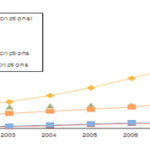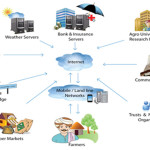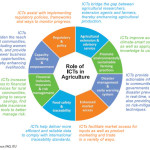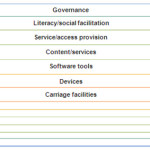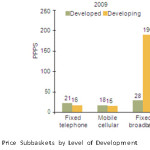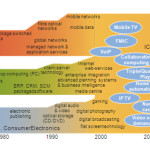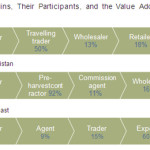Pratik Vanjara
Shree. M and N Virani Science College (Autonomous) Rajkot,Gujarat,India
DOI : http://dx.doi.org/10.13005/ojcst/10.03.16
Article Publishing History
Article Received on : 14-Sep-17
Article Accepted on : 29-Sep-17
Article Published : 29 Sep 2017
Article Metrics
ABSTRACT:
Two major trends that have an effect on our planet: increase and urbanization. The anticipated increase for the primary one and half this century is discouraging. Betting on the estimate, there'll be nine to ten billion individuals by mid-century. This population is simply beneath seven billion that means that there'll be a couple of fifty percentage increases from the start to the center of this century. One could dialogue the relative accuracy of explicit models, however all of them agree that there'll be several, more mouths to enclose the approaching decades.
IT has reworked several different aspects of human endeavor and has helped produce systems for responding to a good varies of social group wants. Indeed, transportation, communication, national security, and health systems square measure utterly dependent thereon to perform even basic functions. However, data, and its automatic technological embodiment, has not compact agriculture to identical level.
KEYWORDS:
Information technology; AGRIBUSINESS; Agricultural breakthroughs; cognitive process
Copy the following to cite this article:
Vanjara P. Information Technology Use in Agriculture. Orient.J. Comp. Sci. and Technol;10(3)
|
Introduction
The Importance of Agriculture
Agriculture is a main source for the survival of human begin. In agriculture field, plants are more important because these plants are used to produce several food grain and through by products such as cereals, powers, organic products without food the life cycle would not possible. Agriculture products export to other country and the farmer brings income through agriculture products. This food is an important part of human beings in day to day life. Time to time the agriculture produces or farmer changes their methods of production with the help of information technology.
Role of IT in Agriculture
Information technology is an important platform for people from all over the world. Agriculture is manual art for the farmer which is given from generation to generation. Manual art likes techniques and secrets of the farming.
Crops have their own differences and atmosphere plays a main role on their developments. But new technology brings a huge change in production and farming. Information technology. Farmers must aware of information technology through IT. They can produce large production of food grain. Through IT they can aware of serving bank & insurance services, government programs super market etc.
The Effects of IT on Agriculture
IT has created its method into the agricultural sector, and with positive results. to call some, here square measure a number of its effects:
- Improved higher cognitive process
- Better coming up with
- Community involvement
- Agricultural breakthroughs
- Agriculture for everybody
|
ASPECT UNIVERSALACCESS UNIVERSALSERVICE
|
|
Availability
|
Focused coverage
|
Blanket coverage
|
|
Public access (e.g., at a pay phone or telecenter)
|
Private service on demand
|
|
Free emergency calls
|
Free emergency calls
|
|
Accessibility
|
Walking distance, convenient locations and hours
|
Simple and speedy subscription
|
|
Inclusively designed premises (e.g., for wheelchair users); inclusively designed terminals or available assistance (e.g., for the blind or deaf)
|
Inclusively designed terminals and services (e.g., for blind or deaf people)
|
|
Assistance from an attendant
|
Assistance through the terminal (e.g., by making calls or viewing help pages for the web)
|
|
Adequatequalityofservice(e.g.,havingfewfailedcallattempts)
|
Reasonable quality of service (e.g., having few dropped calls)
|
|
Affordability
|
Options of cash and card payment
|
CostofaveragemonthlyusageisasmallpercentageofmonthlyGNI percapita
|
|
Options of cash and card payment
|
Options of cash, card, and electronic payment
|
|
Paymentperuse(e.g.,forasinglecallormessageoranhourof Internetaccess)
|
Flat rate, bundles of services or low monthly subscription fee
|
Improved Deciding
By having the mandatory info, farmers—big and tiny will build higher and a lot of educated call regarding their agricultural activities. might or not it’s concerning The exchange of information from all over the world additionally helps farmers be a lot of tuned in to factors to think about before creating their choices.
Better coming up with
Information technology in agriculture thanks to approach back up with farming code which may keep higher track of crops, predict yields, once to best plant and what to plant, to intercrop or specialisex in only one product, or confirm this would like of the crops—just concerning everything required to boost production and financial gain. By adjusting to the trendy farming methodologies, farmers will have higher management of their crops. Gaining info from their farm is crucial in sustaining its success and supply more growth.
Community Involvement
There square measure many programs that square measure created attainable by information technology helps. once a community adopts trendy strategies for agriculture, the assembly of native merchandise are often augmented. There square measure some places wherever folks greatly have the benefit will result in higher financial gain for everybody concerned.
Ict Applications for Smallholder Inclusion in Agribusiness Supply Chains
Information technology in small holder supply chains result show below.
Conclusion
Farmers have to know the importance of information technology for farming and identify the terms of frequency and impact on the production. Sources of Internet, E-mail are the least preferred methods of information technology as farmers are not aware about these sources.
References
- N. Koblitz, “Elliptic Curve Cryptosystems,” Math. of Computation,
- V. Miller, “Use of Elliptic Curves in Cryptography,” Advances in Cryptology—CRYPTO ’85, pp. 417-426, Springer, 1986.
- Advances in Cryptology—CRYPTO ’91, pp. 279-287, Springer, 1992.
- Recommended Elliptic Curve Domain Parameters, Standards for economical Cryptography, Certicom analysis Std. SEC 2, Sept. 2000.
- Curve cryptologic Co-Processor,” Proc. Int’l Conf. data Technology: committal to writing and Computing (ITCC ’04), vol. 2, pp. 486-492, 2004.
- Abdrisaev, B. D., Z. S. Djusupova, and A. I. Semyonov. 2005. “Case Study: Kyrgyzstan’s Experience in Promoting Open Sourcefor National ICT Development.” Systemics, Cybernetics, and Informatics3(2):19–22.
- “A Special Report on Telecoms in Emerging Markets.” The Economist, September 24, 2009.Bhutta, A. R. 2007. “Punjab: Land Records Management and Information Systems.” State Bank of Pakistan, http://www.sbp.org.pk/sbp_bsc/BSC/DFSD/Workshop/Land-Records-Automation-Punjab.pdf, accessed May 2011.
- Dale, P., R. Mahoney, and R. McLaren. 2007. Land Markets and the Modern Economy. London: Royal Institution of Chartered Surveyors(RICS).
- Deininger, K., and A. Goyal. 2010. “Going Digital: Credit Effects ofLandRegistryComputerizationinIndia.”WorldBank Policy Research Working Paper No. 5244. Washington, DC:WorldBank.http://www-wds.worldbank.org/external/default/WDSContentServer/IW3P/IB/2010/03/29/000158349_20100329 110509/Rendered/PDF/WPS5244.pdf, accessed May2011.
- Delville, P. L. 2010. “Registering and Administering Customary Land Rights: Can We Deal with Complexity?” In “Innovations in Land Rights Recognition, Administration, and Governance,” edited by
- Deininger et al. Washington, DC: World Bank, Global LandTool Network (GLTN), Fédération Internationale des Géomètres (FIG),andFoodandAgricultureOrganization(FAO).Pp.28–42.

This work is licensed under a Creative Commons Attribution-NonCommercial-ShareAlike 3.0 International License.

This work is licensed under a Creative Commons Attribution 4.0 International License.
